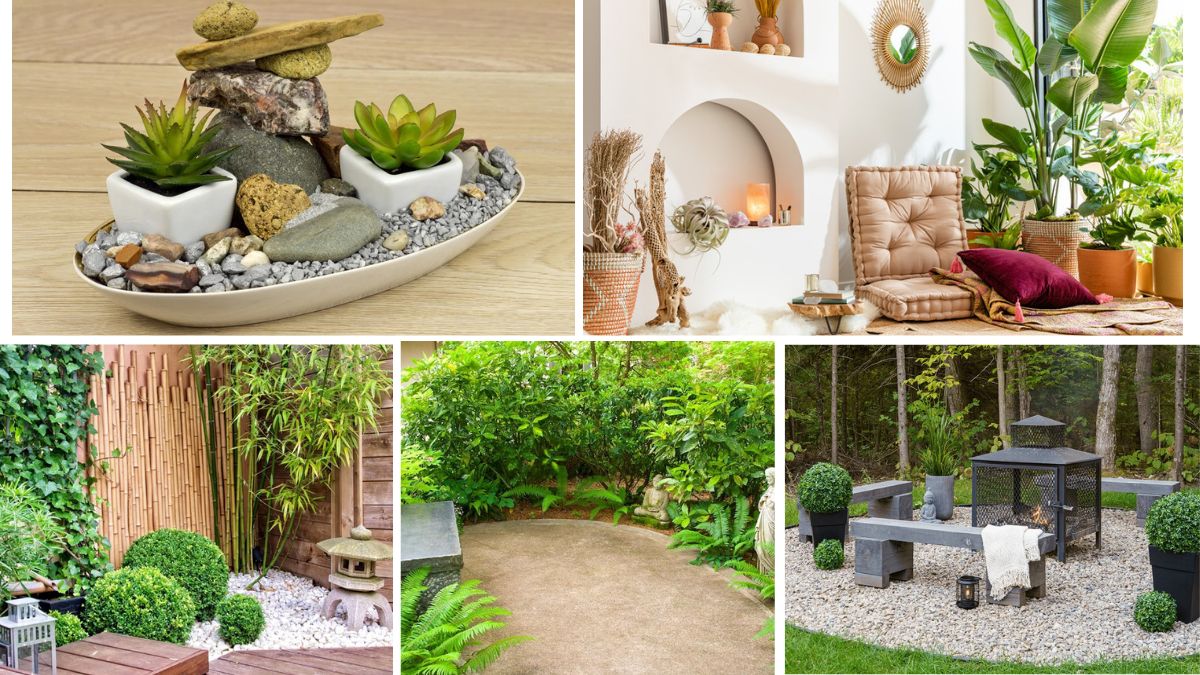Creating a Zen plant corner is a meaningful and aesthetically pleasing way to bring peace, balance, and mindfulness into your home or workspace. Inspired by the principles of Japanese Zen gardens, a Zen plant corner serves as a tranquil retreat from everyday stress. It combines minimalist design, thoughtful placement of greenery, natural materials, and calming elements to promote relaxation and reflection. Whether you live in a compact apartment or a spacious house, creating a Zen plant corner is both achievable and rewarding.
In this article, we will explore step-by-step how to create a Zen plant corner, from choosing the right location and plants to incorporating design elements like rocks, sand, and calming accents.
1. Understanding the Essence of a Zen Plant Corner
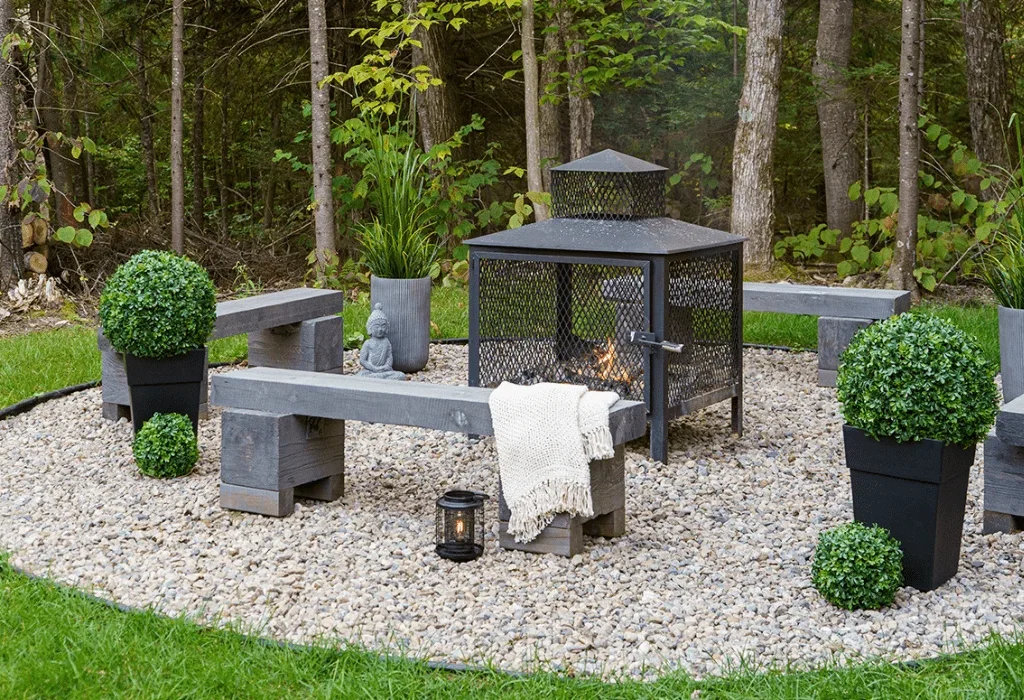
A Zen plant corner is not just a collection of potted plants—it’s a curated space meant to invoke peace, balance, and serenity. Inspired by traditional Zen gardens (Karesansui) in Japan, it focuses on simplicity, minimalism, and the symbolic use of natural elements. The goal is to create a peaceful environment where you can meditate, breathe deeply, or simply sit and disconnect.
Key elements of a Zen corner:
- Minimalist design
- Natural textures (wood, stone, sand)
- Greenery with calming appeal
- Harmonious layout
- Space for mindfulness (e.g., a cushion or bench)
2. Choosing the Right Location

Select a quiet, well-lit space that allows for peaceful moments. Ideal spots include:
- A bright corner in your living room
- Near a window in your bedroom
- A balcony nook
- A section of your home office
Ensure the space receives indirect sunlight, has adequate ventilation, and is free from clutter and noise. Lighting plays a crucial role in mood, so consider both natural and soft artificial lighting options (like warm LED lamps or Himalayan salt lamps).
3. Selecting Zen-Inspired Plants
Zen aesthetics favor simplicity and connection to nature. Choose plants that are visually calming, easy to care for, and align with a naturalistic theme. Some popular choices include:
- Bamboo – Symbolizes strength and flexibility
- Snake Plant (Sansevieria) – Upright, architectural shape adds serenity
- Bonsai Tree – A traditional Zen element that promotes patience and focus
- Peace Lily – Elegant white blooms and air-purifying qualities
- Ferns – Soothing green textures perfect for shaded areas
- Moss – Adds a soft, grounded element to small planters or terrariums
- Succulents – Minimalist and easy to maintain
Use matching planters in natural tones (stone, terracotta, or ceramic) to enhance uniformity and peace.
4. Incorporating Natural Elements
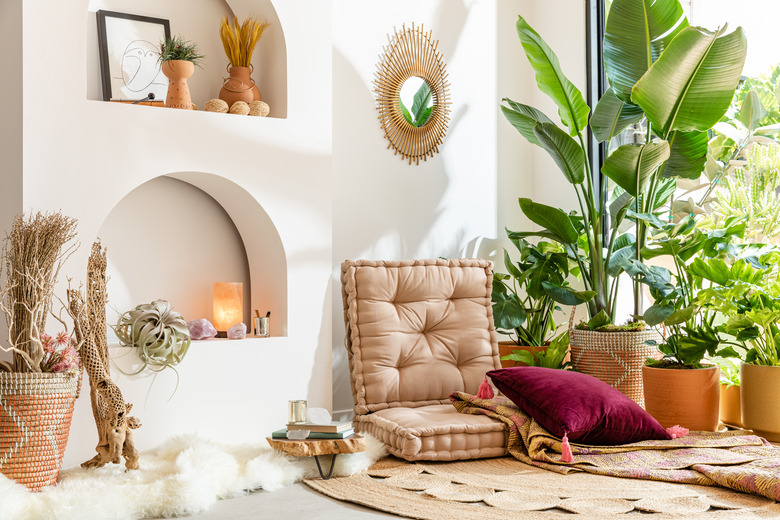
To replicate the harmony of a Zen garden, integrate natural elements beyond plants:
- Rocks and Pebbles: Use smooth river rocks or decorative gravel to create visual balance. You can arrange them in patterns or form a mini dry landscape garden.
- Sand Trays: Include a shallow tray filled with white sand and use a miniature rake to create meditative patterns. This is a key feature in traditional Zen gardens.
- Wood: Include wooden planters, stools, or bamboo mats. The grain and texture of wood connect visually and spiritually with nature.
- Water Features (Optional): A small tabletop fountain or water bowl adds a calming auditory element, simulating the gentle sound of flowing water.
5. Designing Layout and Flow
Designing a Zen plant corner is about balance and flow. Follow these layout tips:
- Asymmetrical Balance: Instead of strict symmetry, use asymmetrical placement for a more natural, organic feel. For example, place a tall plant on one side, balanced by a group of smaller plants on the other.
- Negative Space: Don’t overcrowd the area. Leave breathing room between elements to encourage visual calm.
- Layers and Levels: Use plant stands or shelves to create height variation. This adds depth without clutter.
- Focal Point: Consider one focal element—a bonsai, Buddha statue, or large stone—that draws the eye and anchors the space.
6. Mindful Accessories
Add finishing touches to enhance mindfulness and serenity:
- Meditation Cushion or Mat: Create a comfortable spot where you can sit and reflect.
- Incense or Essential Oils: Scents like sandalwood, lavender, or sage enhance the Zen ambiance.
- Chimes or Bells: Gentle sounds can support focus and bring awareness.
- Statues or Symbols: A small Buddha, lotus, or yin-yang symbol can personalize your space and add spiritual meaning.
Keep accessories minimal to maintain clarity and focus.
7. Lighting for Calm Ambiance
Good lighting transforms the entire feel of your Zen plant corner. Opt for:
- Soft ambient lighting – Use warm bulbs rather than bright, harsh light.
- Paper lanterns or bamboo lamps – These give an earthy, serene look.
- Candles or tea lights – For evening calm and gentle flickering warmth.
If your space lacks natural light, consider using grow lights to support plant health without disturbing the mood.
8. Maintenance and Mindfulness
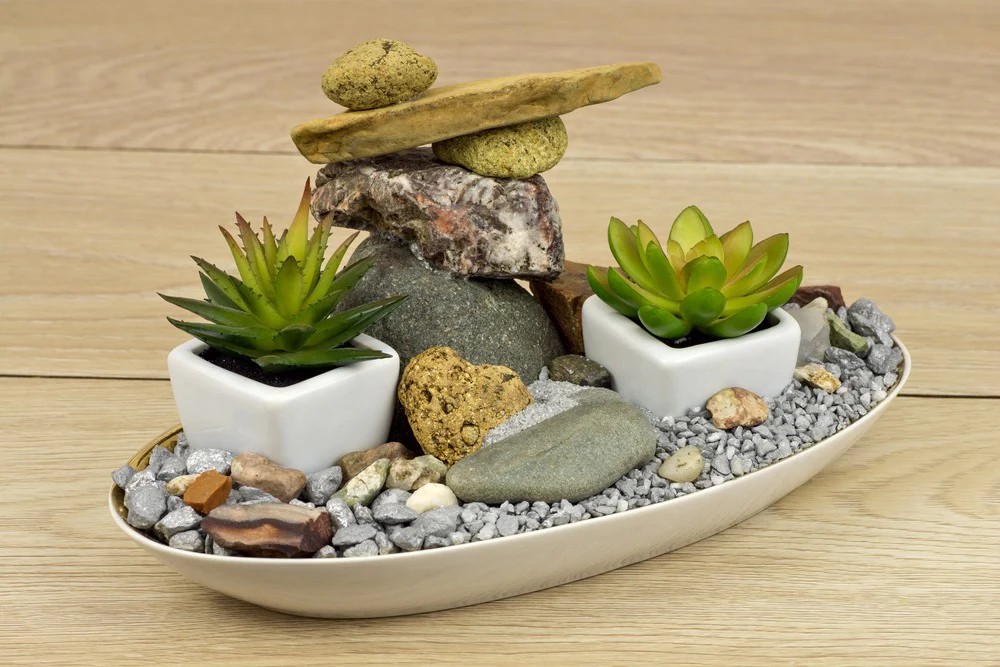
A Zen space requires care and consistency, which in itself becomes a mindful practice. Here’s how to maintain it:
- Watering: Stick to a schedule based on plant needs.
- Pruning: Regularly trim dead leaves and tidy up the space.
- Cleaning: Dust the planters, rocks, and accessories weekly.
- Raking sand trays: Doing this slowly can become a daily meditation.
These routines keep the space alive and aligned with the values of simplicity and awareness.
9. Zen Corner for Small Spaces
Even if you live in a small apartment or dorm, you can create a mini Zen plant corner using:
- A floating shelf with a bonsai and candle
- A small table with a bamboo plant and incense holder
- A window sill arrangement with pebbles, moss, and tiny succulents
- A wall-mounted vertical garden with peaceful accents
Minimal space doesn’t mean minimal peace—it just requires thoughtful design.
10. Benefits of a Zen Plant Corner
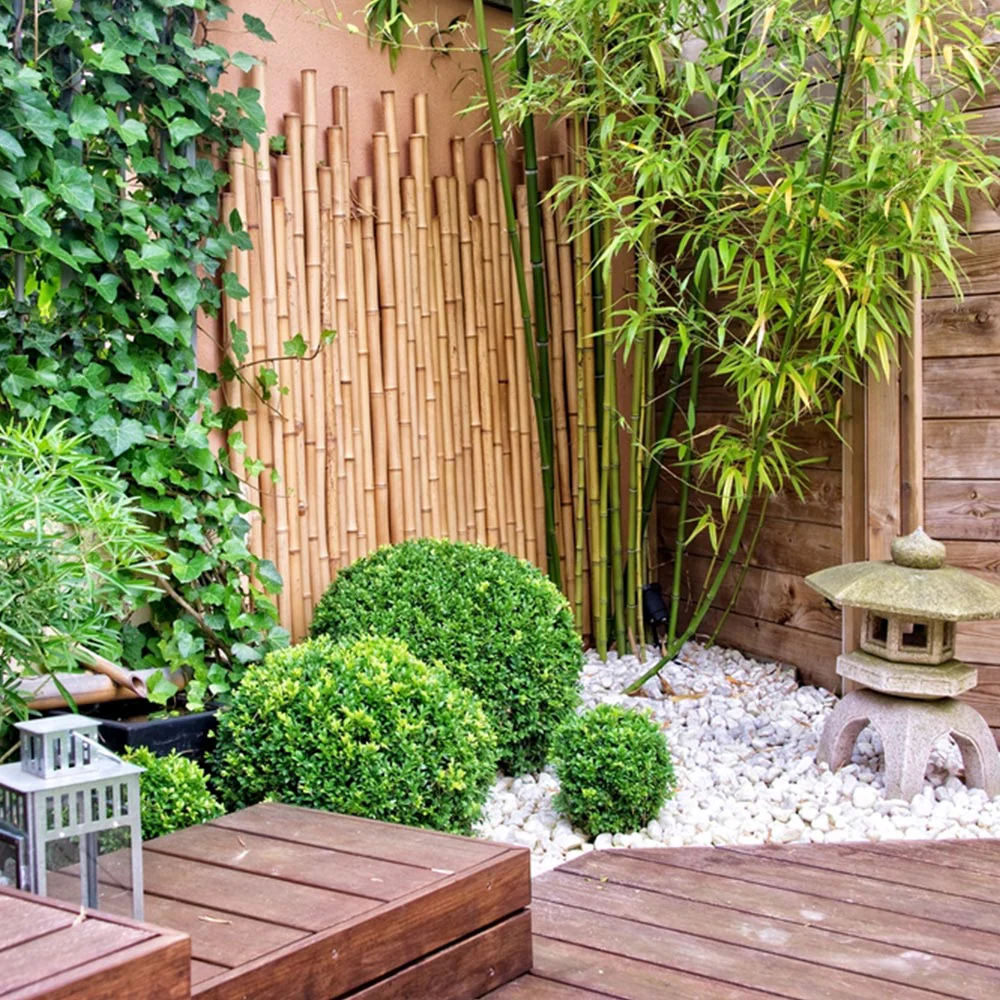
Creating and maintaining a Zen plant corner offers several mental and physical benefits:
- Reduces stress and anxiety
- Improves air quality
- Promotes mindfulness and meditation
- Boosts creativity and productivity
- Enhances interior aesthetics naturally
It’s a soothing refuge you can return to whenever life feels overwhelming.
Conclusion
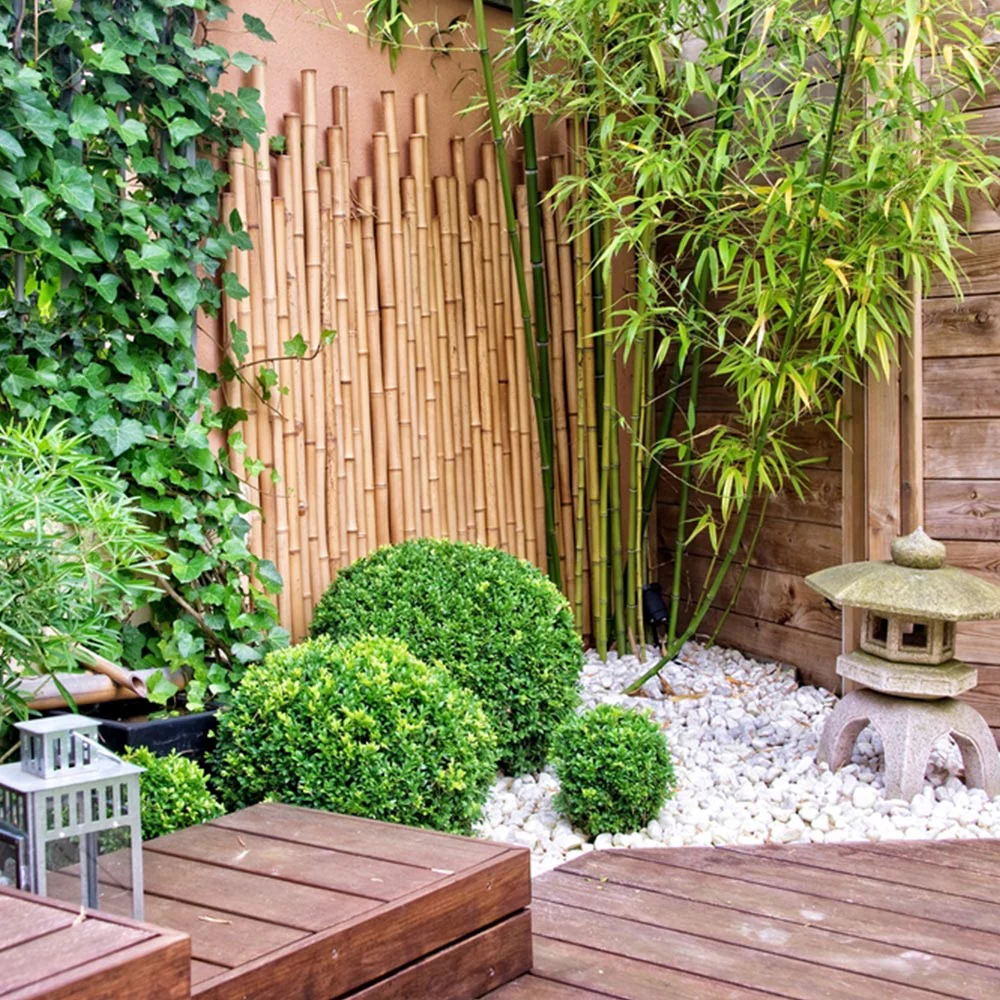
Creating a Zen plant corner is a fulfilling blend of gardening, interior design, and mindfulness. It’s not just about placing a few plants in a room—it’s about intentionally crafting a space that nurtures calm, balances the senses, and reflects harmony with nature. Whether you want a place to meditate, breathe deeply, or simply appreciate beauty, a Zen corner offers a daily retreat into tranquility.
Start with one plant and a few stones—and grow your Zen space over time. As the garden thrives, so will your inner peace.
